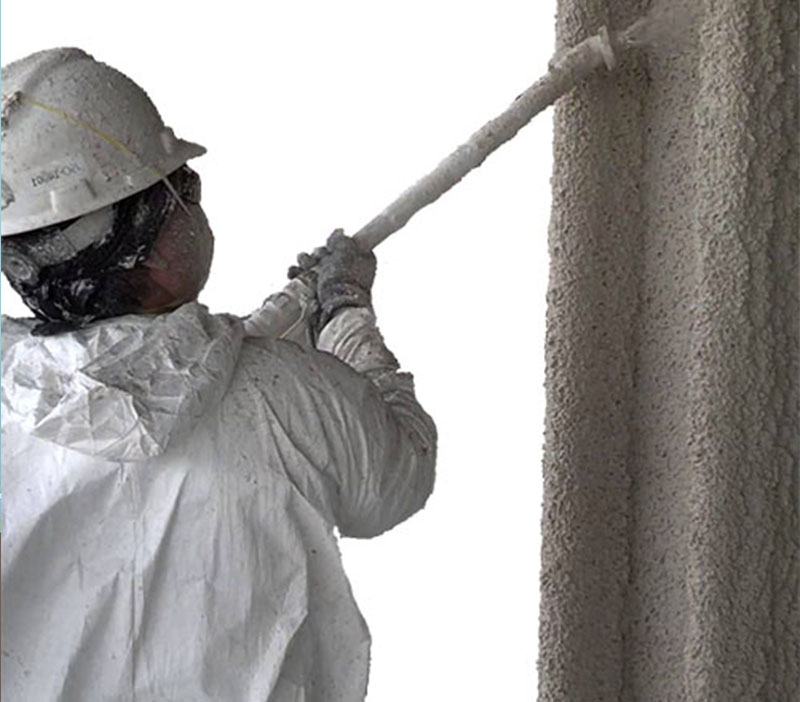NEW ENGLAND'S MOST ACCURATE ENERGY AUDIT COMPANY
“Colonial came out to give me a quote on a job. They quickly identified that they would not be the best provider for the work I needed (due to reasons beyond their control), and spent some time discussing with me other options instead. I really appreciate the professionalism and care shown in them immediately saying “there’s a better option for you then our product for this”, instead of trying to sell me a worse solution just to get a job. Thank you, and these guys will be my first call in the future if needed.”
Eric H. ![]()

Ask Us About Our Multiple Services Discount

Experience
We have 15+ years of collective knowledge and completed 10,000+ jobs.

Experts
All of our installers are carefully selected to be the best in the industry.

Local
We provide warmth and safety throughout the New England area.

Quality
Our insulation will serve you for many, many years to come.
Residential Energy Audit Company
One of the easiest ways to reduce your energy consumption in your home is through a residential energy audit. Not only will you help the environment, but you can also save some money on utility costs that would normally go towards wasted power. A home energy audit takes a scientific approach to how a building uses/loses energy. The thermal imaging shows how heat or cold from outside comes through the structure and gives a visual to the owner. This test shows where and how much insulation needs to be done. By performing a home energy audit, an individual is able to save money in the long run by finding out where their energy is being lost. This can be done through simultaneously testing the indoor air quality of your home while scanning it with infrared thermal imaging. Scanning for air leaks will help you pinpoint what exactly where the house is losing its energy, and through this it is possible to know where to seal these leaks. The results will show how much insulation needs to be done, saving the owner money in energy costs.
In addition to this, a home energy audit can help increase the value of one’s home by increasing its insulation efficiency. This is especially useful for individuals who are planning to sell their homes in the near future, as they will be able to request a higher price tag without having to spend money on repairs. By finding these problems early, it can save one money by not having to pay for more intense/costly repairs in the future. A residential energy audit can reveal ways to improve your overall energy efficiency and save you money on heating bills. It can also give homeowners peace of mind knowing they are doing their part for the environment. Colonial Green Products are here to assist you with your every residential energy audit need.
Perfect! The guys came when they said they would. They were nice and professional They were very detailed with covering areas and things things to protect them from over spray. They cleaned up everything before they left.
BOB A.
![]()
Commercial Energy Audit Company
An energy audit is a process carried out by professionals to analyze energy consumption, identify potential saving opportunities, establish whether energy efficiency measures are needed, and recommend appropriate actions. A commercial energy audit will help your business to identify opportunities for cost saving by making changes in your utility bills through the optimization of existing equipment and appliances. An energy audit is a process of reviewing and analyzing your business, looking at all areas that affect energy usage, which then aids in creating a plan to reduce those costs. Energy audits are often part of a wider energy management plan, which typically includes finding ways to reduce expenditure and cut back on what’s being used. The thermal imaging shows how heat or cold from outside comes through the structure and gives a visual to the owner. This test shows where and how much insulation needs to be done.
The blower door test creates negative air pressure and provided an airflow/ leakage number. During this test, we can clearly see where the air leakage is coming and going. This creates a baseline for when improvements are made. A test put after the work will provide another air leakage number which is compared to the first to quantify the energy-saving improvements provided. This clearly shows where air sealing needs to be done. Combustion analysis checks each combustion appliance to make sure it is running properly and masses sure it is not creating a dangerous level of carbon monoxide. A review of utility bills and heating fuel bills will allow us to show the return on investment of any improvements. A commercial energy audit can reveal ways to improve your overall energy efficiency and save you money on your bills. It can also give business owners peace of mind knowing they are doing their part for the environment. Colonial Green Products are here to assist you with your every commercial energy audit need.
I purchased a house about 4 years ago and found the winters cold in certain areas of my home. I called Colonial Green Products for a free estimate. The workers are friendly, professional and finished on time.
SANDRA P.
![]()
Professional Energy Audit Company
A professional energy audit is a systematic analysis of building’s current and future energy requirements for heating, cooling, lighting and ventilation. Commercial and residential energy audits provide information necessary to reduce the amount of energy used by buildings. Don’t go another season paying too much for heating and cooling. Starting by hiring a professional company to identify all possible areas for reducing costs is certainly ideal. The greater the number of issues that can be identified and corrected, the more likely a payback on your investment will occur. Many people choose to do their own residential and commercial energy audits via online or available software programs, but this may not always be the best decision. Many such auditing programs are limited in scope and usefulness. I recommend hiring a professional residential and commercial energy audit company for several reasons.
First, a professional can identify a much greater number of issues in your home than you might find on your own. This is because they have been trained, they use specialized equipment that you don’t have access to, and they know the latest building science research. These differences all add up to more problems being found and addressed. Second, you can be sure that all parts of your home are included in the audit. Many people do not realize how many different areas their homes actually have. A professional will typically include at least 7 regions or more to complete a full inspection, whereas most online auditors will only look at one area. A professional commercial and residential energy audit can reveal ways to improve your overall energy efficiency and save you money on your bills. It can also give business owners and home owners peace of mind knowing they are doing their part for the environment. Colonial Green Products are here to assist you with your commercial and residential energy audit needs.
Great insulators. They know how to get the job done right the 1st time.
DARREL K.
![]()
Energy Audit Company Near Me
An energy audit is a physical assessment of your building’s energy use, performed by professional auditors who specialize in evaluating buildings’ performance based on industry-accepted guidelines and metrics. The audit measures your building’s energy use in the four areas of most importance for conserving energy: insulation, heating equipment, air conditioning equipment, and lighting. A full energy audit includes an inspection of your home’s exterior, interior, mechanical systems and utility meters. The objective is to help assess how much money you could save by making changes that reduce the demand for heating or cooling, thus reducing your energy bills.
Important areas of commercial and residential insulation are:
- Wall – Walls make up the greatest surface area in a home or commercial building, which makes this the largest potential for heat loss.
- Attic – Heat by it’s very nature rises, which makes this one of the more important rooms to insulate in your home or business.
- Crawl Space – Without much between you and the ground, it’s critical to insulate here to not only keep you warm, but to keeps your pipes freezing in your home or business.
- Basement – In addition to keeping out the cold and with proper insulation, we solve basement problems in your home or business that are not commonly thought of like pests, insects and mold.
Increasing heating costs is a trend not likely to end soon, but Colonial Green Products near me can help you permanently and significantly cut those costs. As a professional commercial and residential “energy audit company near me”, Colonial Green Products will save your home as well as your business a considerable amount of time and money. If you have been searching for a commercial and residential “energy audit company near me”, then contact us today for a free insulation estimate.
They did a great job and the house is more comfortable in all seasons. I would highly recommend them.
ANDREW S.
![]()
Wachusett Brewery
Westminster, MA
Insulation

Tiny House
Southern NH
Spray Foam Insulation

Grove Street
Worcester, MA
Insulation, Fireproofing

1800's Farmhouse
Winchendon, MA
Spray Foam Insulation

Wentworth Community Housing
Hartford, VT
Fireproofing

RiverWoods Exeter
Exeter, NH
Fireproofing

Spray Foam
Insulation

Spray foam insulation is the process of filling an area with a foam that adheres to the shape of its container. This type of insulation is resistant to fire, rot, mold and pest infestation, making it suitable for both residential and commercial use.
Cellulose
Insulation

Cellulose insulation is an environmentally friendly, low cost material that is made mostly from recycled newspaper. It has high thermal resistance properties and can save on energy costs when compared to other types of insulation.
Fiberglass/Mineral Wool Insulation

Fiberglass and mineral wool insulation serves as an air barrier because the individual fibers are too large to fit through cracks and voids that may have developed in an existing building envelope. Fiberglass and mineral wool insulation can block airflow.
Fireproofing
C

The process of fireproofing is known as the field that deals with preventing or minimizing the spread of fire. It mainly focuses on protecting structural members from fire damage, including steel beams, steel trusses, and concrete components/elements.
Firestopping
C

Firestopping is the term used to define the products which are required for fire protection of structural systems. A void in a continuous barrier could allow a fire to spread throughout that void, thus compromising an entire building.
Residential
Spray Foam Insulation
Spray foam is an air barrier which results in the elimination of drafts, hot spots and cold spots.
Cellulose Insulation
Cellulose insulation is a remarkable improvement over aging insulation in an existing building.
Financing Available
Interest Rates from 9.5% to 14.5%
Commercial
Spray Foam Insulation
Go green in more ways than one, by saving energy as well as money on your monthly bill.
Cellulose Insulation
Our insulation services are designed to function within the needs of the facilities.
Firestopping & Fireproofing
Interest Rates from 9.5% to 14.5%
© Colonial Insulation | 2022-2025








